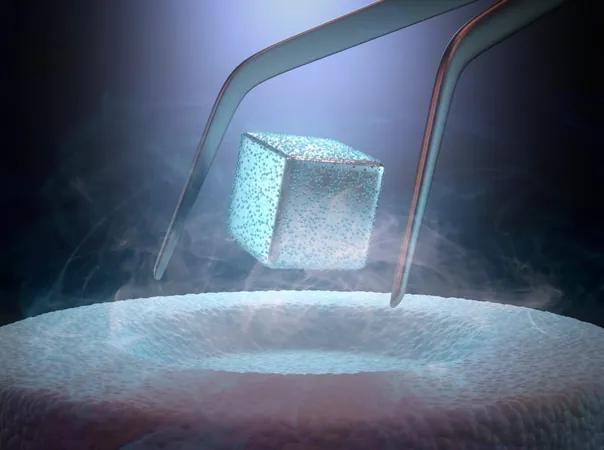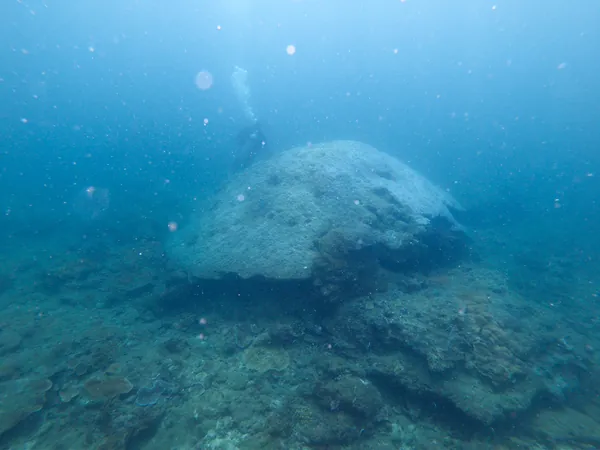
The Revolutionary Path of High-Temperature Superconductors: A Timeline from Discovery to Future Applications
2025-01-02
Author: Arjun
Introduction
The remarkable tale of high-temperature superconductors (HTS) begins over a century ago, reshaping the landscape of physics and technology. Renowned physicist John H. Miller, Jr. from the University of Houston sheds light on this fascinating journey and its exciting potential applications in contemporary science.
The Early Years: Discovery and Initial Understanding
The concept of superconductivity was first unveiled in 1911 by H. Kamerlingh Onnes, who spearheaded efforts to liquefy helium. His lab discovered that certain metals displayed an astonishing phase transition, exhibiting zero electrical resistance when cooled below a critical temperature (Tc). This groundbreaking finding led to the identification of the Meissner effect in 1933, where superconductors expel magnetic flux, further enriching the field's understanding.
The BCS Theory and Progress in the 20th Century
Fast forward to 1957, a pivotal year in superconductivity research. John Bardeen, Leon Cooper, and J. Robert Schrieffer introduced the BCS theory, a microscopic explanation for superconductivity emphasizing the pairing of electrons mediated by phonons. This theory set the stage for subsequent discoveries related to both traditional and high-temperature superconductors.
Advancements and the Era of High-Temperature Superconductors
In the 1960s, the classification of superconductors improved significantly, thanks to contributions from researchers like Abrikosov. He clarified the distinctions between type-I and type-II superconductors, with the latter showcasing the unique potential of flux vortices, which can sustain higher magnetic fields crucial for applications in technologies like MRI machines and fusion reactors.
The Breakthrough of 1986
Despite incremental progress through the early decades, the real revolution emerged in 1986 with the discovery by J. Georg Bednorz and K. Alex Müller of superconductivity at a Tc exceeding 30 K in the copper-oxide compound La2−xBaxCuO4. This unexpected breakthrough ignited a flurry of research, particularly into cuprate superconductors, leading to even higher critical temperatures.
The Race for Higher Critical Temperatures
By 1987, a collaboration between the University of Houston and the University of Alabama-Huntsville led to the observation of superconductivity at 93 K in YBa2Cu3O7 (YBCO), establishing a new gold standard. Researchers recognized that the potential of around 90 K could be duplicated across many related compounds. This race for increased Tc levels continued, culminating in advances that peaked at 134 K with mercury-based cuprates.
Practical Applications and Material Improvements
Throughout the years, a significant focus has been placed on refining material properties for practical applications. The critical current density (Jc), which measures how much current a material can carry without losing its superconducting properties, has been a key parameter. Cuprate ceramics face challenges due to grain boundaries that diminish Jc. However, recent advancements at institutions like the Texas Center for Superconductivity have led to the production of high-quality REBCO thin films, boasting Jc values that can reach up to 5 million A/cm².
Innovations in Manufacturing
Innovations such as ion beam-assisted deposition, developed in 1995, have also paved the way for the production of flexible REBCO tapes, a game changer in the field. These tapes are now being manufactured at lengths surpassing kilometers, enabling installations for power transmission cables in urban settings, significantly enhancing capacity without requiring extensive infrastructure changes.
Future Prospects and Energy Applications
As we look to the future, the capabilities of REBCO HTS tapes continue to offer groundbreaking possibilities. One notable application is in the construction of compact tokamak fusion reactors. Companies like Commonwealth Fusion Systems and Tokamak Energy are leading the charge, exploring designs that incorporate high-field superconducting magnets that could revolutionize energy production.
Conclusion
With ongoing research, advancements in high-temperature superconductors promise a future where clean, limitless fusion energy and other cutting-edge technologies are not just dreams but tangible realities. What innovations and breakthroughs lie just around the corner? Stay tuned, as the science of superconductivity evolves and reshapes our world!



 Brasil (PT)
Brasil (PT)
 Canada (EN)
Canada (EN)
 Chile (ES)
Chile (ES)
 Česko (CS)
Česko (CS)
 대한민국 (KO)
대한민국 (KO)
 España (ES)
España (ES)
 France (FR)
France (FR)
 Hong Kong (EN)
Hong Kong (EN)
 Italia (IT)
Italia (IT)
 日本 (JA)
日本 (JA)
 Magyarország (HU)
Magyarország (HU)
 Norge (NO)
Norge (NO)
 Polska (PL)
Polska (PL)
 Schweiz (DE)
Schweiz (DE)
 Singapore (EN)
Singapore (EN)
 Sverige (SV)
Sverige (SV)
 Suomi (FI)
Suomi (FI)
 Türkiye (TR)
Türkiye (TR)
 الإمارات العربية المتحدة (AR)
الإمارات العربية المتحدة (AR)